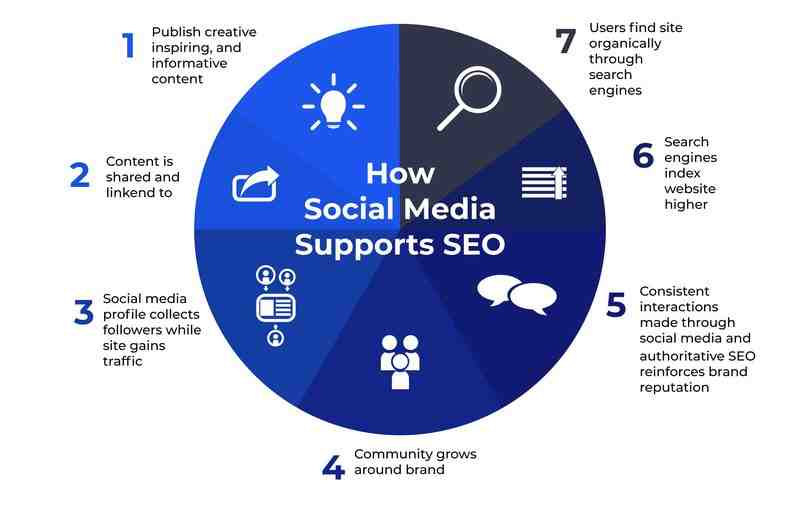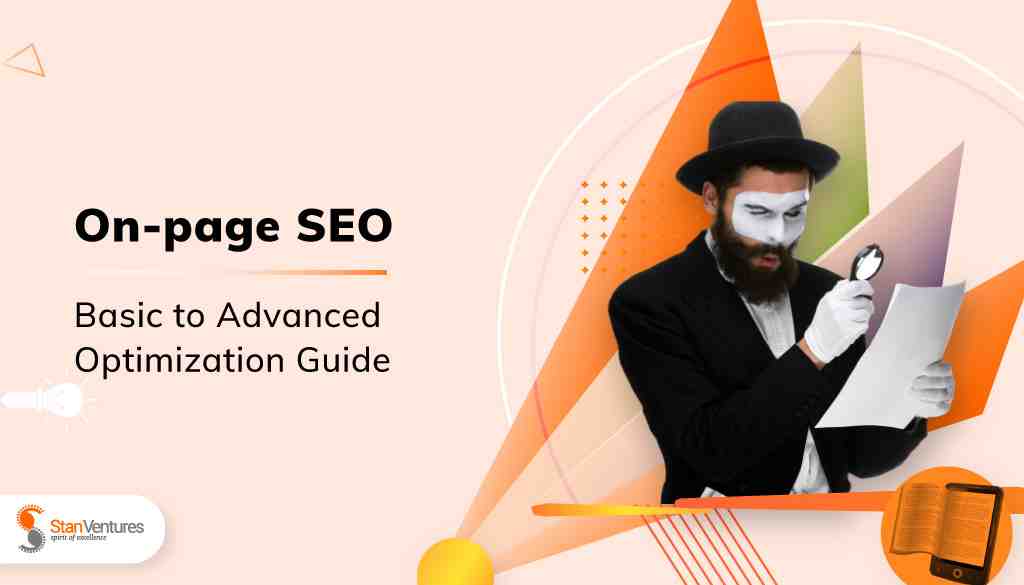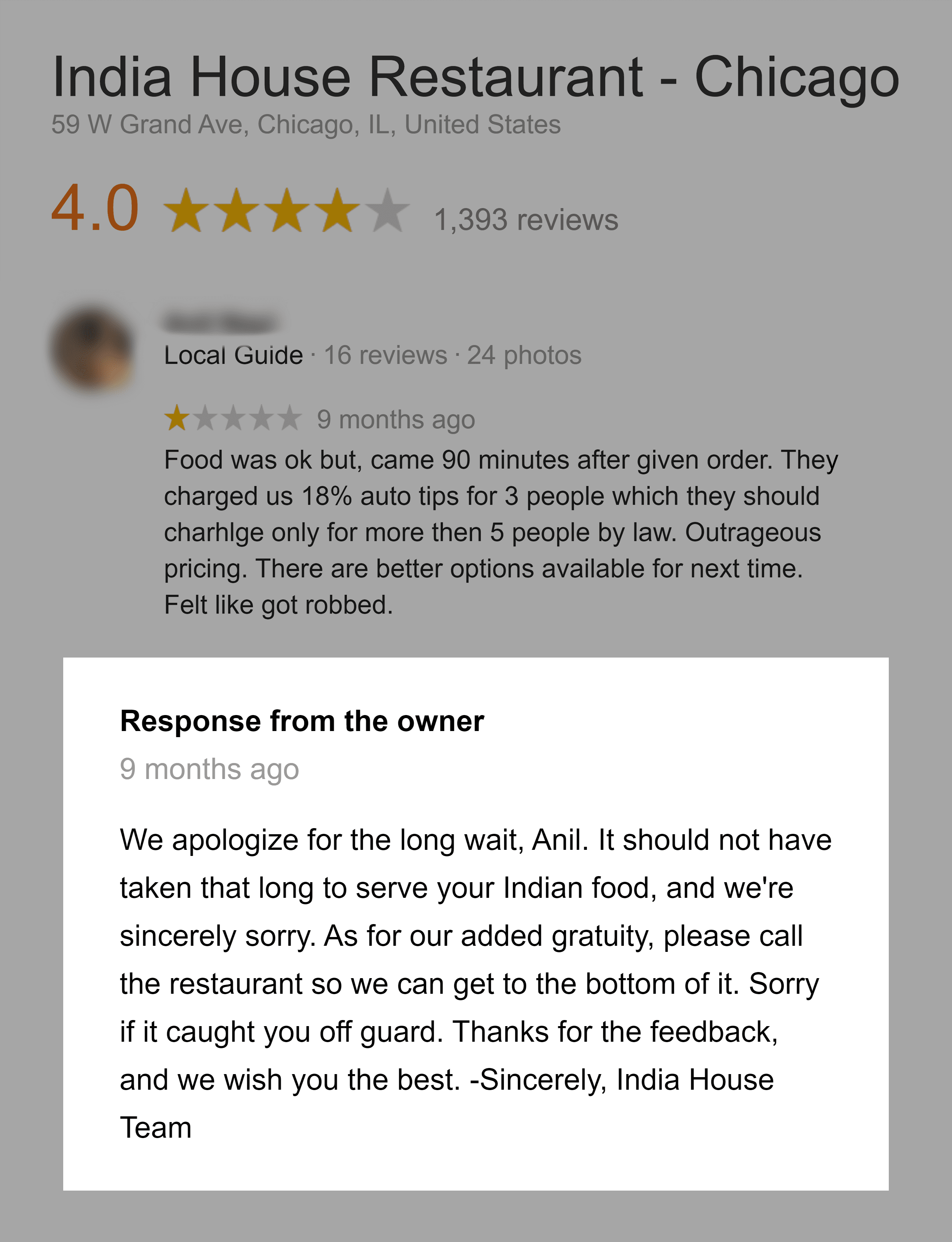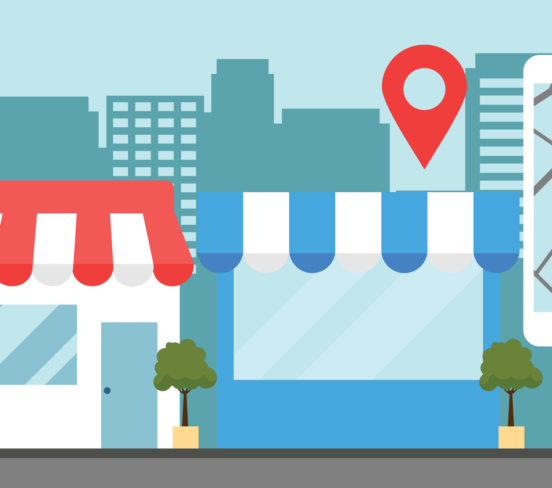In 2022, an online presence for your restaurant business is essential.
When looking for new places to eat, people turn to having thousands of results at their fingertips – and the competition is fierce.
If you want locals to find your restaurant when looking for places to eat in the area, you need to improve your online presence and stand out in those search results.
Search engine optimization (SEO) is one of the best and most affordable ways to differentiate your restaurant online.
While on-page SEO is about optimizing your website, off-page SEO focuses on spreading your reach online.
Below, you’ll find an off-page SEO checklist for restaurants featuring all the elements you need to monitor regularly.
You’ll learn about Google My Business, TripAdvisor, Yelp, social media, link building, and more.
1. Claim Your Google Business Profile
Contents
- 1 1. Claim Your Google Business Profile
- 2 2. Claim Your Profiles On Yelp And TripAdvisor
- 3 3. Link Your Website On Social Media
- 4 4. Do Link Building Outreach
- 5 5. Collaborate With Food Influencers
- 6 6. Keep Your NAP Updated Throughout All Platforms
- 7 7. Add Your Restaurant On Popular Review Platforms And Business Directories
- 8 Summary
- 9 How are you structuring your SEO strategy in 2022?
- 10 What are the backlinks in SEO?
- 11 Is SEO a one-time project?
- 12 What is da and pa in SEO?
- 13 What is a website maintenance plan?

Google Business Profile (GBP), formerly known as Google My Business, is one of the most powerful tools for businesses anywhere.
This allows owners to increase the visibility of their business on Google and make a good first impression by highlighting what makes them unique.
Any information you decide to highlight is what customers will see when they search for your restaurant or restaurants near them on Google.
If you want customers to find your restaurant on Google Search and Google Maps, you need to claim and fill out your Google Business Profile.
The more information you add about your restaurant, the more likely hungry customers will find it.
Your restaurant website is the most important element you need to add to Google My Business.
This will give you free backlinks that are invaluable and make it easier for people to navigate to your website.
Equally important for business is displaying your menu and order page.
Additional must-have Google My Business information includes:
To make your GMB profile more attractive, showcase daily specials, promotions, events and behind-the-scenes videos.
If you have multiple restaurant locations, we recommend that you have a separate Google My Business profile for each location.
2. Claim Your Profiles On Yelp And TripAdvisor

Yelp and TripAdvisor are both second on this off-page restaurant SEO checklist.
According to a BrightLocal survey, 98% of customers read online business reviews in 2021.
Websites like TripAdvisor and Yelp are visited by millions of consumers every month.
Naturally, that’s where your restaurant needs to be.
Add your restaurant to TripAdvisor and Yelp, or claim your listing if it’s already there.
Yelp For Restaurants
Once you’ve filled out your basic information, follow these steps to customize your Yelp profile and stand out from the crowd:
TripAdvisor For Restaurants
The above rules also apply to TripAdvisor.
Start by filling in the basics of the profile such as name, address and website.
Next, improve your profile with these tips on how to rank higher on TripAdvisor:

Social media is another important aspect of off-page SEO for restaurants. While this is not a direct ranking factor, it can still affect SEO indirectly.
How? Having your social media profiles redirected to your website will get you additional traffic and business, and build your authority online.
However, just having a profile is not enough.
You need to have an active presence and interact with your followers to encourage them to share your content.
Each social network has its own function.
On Facebook, you can post your menu using the ‘Start Order’ button to actively increase sales.
Instagram is where your dishes will shine. Post photos that your followers won’t be able to refuse.
Twitter is an excellent place to address customer concerns.
Use it to update followers on opening hours changes, new menu items, events, and anything else they might want to know about.
While Facebook, Instagram, and Twitter are the holy trinity of social media platforms, there are other platforms you can take advantage of that can deliver surprising results, such as Pinterest, Snapchat, or TikTok.
On Pinterest, you can post photos of your delicious menu, link to your website, create recipe boards, interact with others in the restaurant industry, and create exclusive gifts.
Snapchat can help you attract more local subscribers using geofilters and engage your audience with little games and discount codes hidden in your stories.
Use TikTok to connect with a younger audience, create hashtag challenges, create funny skits and challenges, and take customers behind the scenes.
Don’t forget to add all your social media profiles to your website.
Use social media to share user-generated content as well.
However, make sure you have written permission from the customer to share their posts on your page.
4. Do Link Building Outreach

Getting quality backlinks from high authority websites can help increase your site’s authority, reputation and search ranking.
Showcasing your restaurant in local online publications will also expose your business to new customers.
First, look for websites that rank highly in the food industry and approach them with guest post promotions.
You can offer your knowledge as a chef or restaurant owner and include a link to your restaurant website in the article.
Next, find a local business directory and contact to add your restaurant.
The same is true for websites that rank the best restaurants in an area.
Offer to include a discount code for their visitors to sweeten the deal.
Create A Restaurant Blog
If you want relevant websites to link to you naturally, consider starting a blog where you share your experiences in the restaurant industry.
Remember to do keyword research to find topics that interest people to read so that your articles can rank highly.
Here are some restaurant blog topic ideas for you to explore:
When searching for keywords, pay attention to your restaurant’s cuisine and key selling points.
If you own a vegetarian restaurant, for example, you wouldn’t write about “how to cut a steak” but rather “vegetarian lunch box ideas” or “how to season vegetables for grilling.”
5. Collaborate With Food Influencers

Food bloggers and influencers with social media followings can be excellent promoters for your restaurant.
They can help increase traffic to your website and improve your search engine rankings by linking to your domain.
Invite local influencers to exclusively sample your latest menu item so they can post about it on their blogs and social media.
You can also give special discount coupons to their followers.
You can find local influencers on subreddits created by and for food bloggers or use a tool like meetup.com to find gatherings of foodie groups in your city.
Try paid blogger outreach software if you want to invest more in blogger outreach.
6. Keep Your NAP Updated Throughout All Platforms
NAP consistency (name, address, phone number) is an important step in restaurant SEO and a must-have item on this off-page SEO checklist.
Your NAP information must be available on your website, social media and third party websites.
Search engines really like this information, as it helps users find answers to their questions.
In order for your restaurant information to show up in relevant searches, you must display your NAP information and update it continuously across all platforms.
Make sure the information is spelled the same and is displayed in the same format.
Otherwise, it can confuse users and make you untrustworthy for search engines.
7. Add Your Restaurant On Popular Review Platforms And Business Directories
Once you’ve covered your base with Google My Business, Yelp, and TripAdvisor, it’s time to research additional directories and websites where you can list your restaurant.
Some of them will help you get valuable backlinks, but all of them will expose you to new customers.
For example, Bing may not be as popular as Google, but it’s worth adding your restaurant to Bing Places.
Here are other websites where you should add a restaurant to improve off-page SEO:
Remember the advice from the previous section – keep your RAN information consistent across platforms.
Summary
Good food is just one element of your restaurant’s success.
Without a solid online presence, you cannot cater to today’s foodie audience.
Getting attention online starts with your website but continues with off-page restaurant SEO.
From social media to review websites and food blogs, check out all the items on this off-page SEO checklist to keep your restaurant at the center of the local community – and a dominant force in search results.
Featured Image: Monster Ztudio/Shutterstock
Technical SEO refers to website and server optimization that helps search engine spiders crawl and index your site more effectively (to help improve organic rankings).
How are you structuring your SEO strategy in 2022?
How to Create an SEO Strategy in 2022
- What is SEO? …
- Mobile SEO. …
- Brainstorm and Research Topic List. …
- Create Long Tail Keywords Based on the Topic. …
- Build Pages for Each Topic. …
- Prepare Blog. …
- Create a Consistent Blogging Schedule. …
- Create a Linking Plan.
Pourquoi s’intéresser aux moteurs de recherche en tant qu’entreprise ? 1- Le SEO permet une croissance exponentielle La prend du temps, mais a vaut le coup : la premiere results page de Google génère 90% des clics ; le site en premium position obtient plus de 30% de visiteurs en moyenne (source: Backlinko).
What are the backlinks in SEO?
Backlinks are links that are created when one website links to another. Backlinks are also called “inbound links” or “inbound link.” Backlinks are important for SEO.
What are backlinks in SEO and how do they work? Backlinks occur when one website links to another website. Also referred to as inbound or inbound links, backlinks make their connection through an external website. Links from these outside domains lead to pages in your own domain.
What are SEO backlinks examples?
Google and other major search engines consider backlinks to be “votes” for certain pages. Pages with a high number of backlinks tend to have high organic search engine rankings. For example, here’s a link from Forbes to my website. Since the link leads directly to a page on my website, it is a “backlink”.
What does a backlink look like?
Definition of backlink A backlink is a link (for example, starting with something like this https://) from one page on a website to another page on a different website.
Is SEO a one-time project?
In short, SEO Jumpstart is a one-time optimization that gives you a starting point to be found by search engines, and ultimately potential clients, customers or audiences.
Does SEO have to be done every month? The truth is, you don’t have to pay an agency for a monthly SEO campaign. And as the director of an agency, I’m sure many of you are shocked to hear this. SEO is not rocket science.
Is SEO a one-time cost?
SEO is not a one-time project; it needs to be constantly updated, analyzed, and adjusted to give the desired results. Content and links should be continuously improved and improved. This is why most business owners will be more than willing to pay a monthly retainer for quality SEO services.
What is the cost of SEO?
Average SEO costs are $100-$250 per hour for US SEO agencies. SEO costs often range from $2,500 – $10,000 per month for US agencies. Average SEO plan costs $2819 per month (per Ahrefs)
How long should you pay for SEO?
If you can’t budget for 6 to 12 months of SEO, you might be better off putting that budget elsewhere. Paying for just a few months of SEO is, in most cases, no better than throwing away your money. SEO is a long-term marketing tactic, and should not be seen as a way to quickly generate sales.
How often do you pay for SEO?
If you hire a top tier SEO company to run local campaigns, expect to pay $500.00 per month. National or international campaigns will require a minimum budget of $2,500 to $5,000 per month. Some companies offer “trial plans” at lower prices, with no contracts.
How long will SEO last?
You Should Expect To See Results From SEO Within 6 to 12 Months… SEO should show results within a 6 to 12 month period. By results we mean a measurable increase in traffic and associated leads or conversions.
Does SEO last forever?
SEO is a lot of things, but predictable and “forever” is not. We don’t rely entirely on SEO and we don’t think other businesses do either; As always a healthy mix of marketing activities is the best way to ensure your prospect funnel doesn’t collapse overnight.
Is SEO dead in 2021?
Don’t be fooled: SEO is not dead, but evolved into more than a few years ago. If you’ve been debating whether to invest in SEO for your business or not, read on to find out why SEO isn’t dead – but is actually thriving – in 2021.
Is SEO dead in 2022?
No. SEO is not dead in 2022. SEO is still a very powerful digital marketing strategy. SEO will continue to change as Google updates its algorithms, but that’s to be expected.
What is da and pa in SEO?
If you’ve spent any time with SEO, you’ve probably heard the terms Domain Authority (DA) and Page Authority (PA). These two metrics provide some insight into how strong your site’s SEO is and how well you rank on Google and other search engines.
What is DA & PA? Domain Authority and Page Authority (DA/PA) are indicators developed by MOZ, a highly respected and reputable digital company, that predicts how well a page will rank in search engine results. Scores for DA/PA are calculated algorithmically on a scale from 1 to 100.
What is DA in SEO?
Domain Authority (DA) is a search engine ranking score developed by Moz that predicts how likely a website is to rank on search engine results pages (SERPs). Domain Authority scores range from one to 100, with higher scores corresponding to a greater likelihood of ranking.
What is DA in backlink?
Some businesses pay thousands of dollars to get one 80 DA backlink. Domain Authority (DA) is one of the most important metrics when it comes to websites. Developed by Moz, DA is a reflection of how popular and trustworthy a site is. The higher the DA, the better the link.
Which DA and PA is best for SEO?
Among the best-known are a pair of metrics developed by the SEO experts at Moz: Page Authority (PA) and Domain Authority (DA). PA and DA are similar in terms of scores, on a scale from 1 to 100, which measure the relative likelihood of a strong search engine ranking for a page or site, respectively.
What is good DA in SEO?
Its logarithmic scale means it is much easier to increase your score if your domain authority is at 20 or 30 than if it is at 70 or 80. Domain authority between 40 and 50 is considered average, between 50 and 60 is considered good and over 60 is considered very good.
What is difference between DA and PA?
DA is referred to as Domain Authority, which is a search engine ranking score. In practice, it predicts your website’s performance in investigating how well the website ranks in the SERPs (Search Engine Results Pages). While PA is Page authority that is used to predict how a web page will rank in the SERP.
Quand on utilise d’ailleurs ?
The expression ces deux ne doivent pas tre confondues. D’ailleurs, au sens propre, signifie « d’un autre endroit, d’autres endroits » : Il en est venu de toute la région, et même d’ailleurs. Au figuré, cette locution a le sens de « du reste, au reste » et s’emploie alors le plus souvent avec une valeur concessive.
Qui d’ailleurs synonyme ?
De plus, du reste, du coup, pendant qu’on y est.
Quelle est la différence entre d’ailleurs et par ailleurs ?
« D’ailleurs » est utilisé pour signifier « de plus », « pendant qu’on y est », c’est une conséquence logique. Quant l’utilisation de « Par ailleurs », blemish signifie « d’un autre côté », « par un autre moyen », c’est une opposition.
What is a website maintenance plan?
A website maintenance plan is exactly what it looks like: an ongoing plan to maintain and support your website. It often requires more in-depth work than most people can do or know how to do well, so they turn to an outside digital marketing agency or vendor to maintain their website for them.
Why do you need a website maintenance plan? The main benefit with a maintenance plan is the fact that the developer or website designer will be on hand to assist with content and design updates when needed. This ensures brand identity as a maintained website will avoid issues like broken links, dead pages and outdated information.
What does website maintenance mean?
Website maintenance is the practice of monitoring the overall health and performance of your website. Keeping a website up to date is essential to ensure it is functioning at full capacity, attracting and retaining site visitors.
What is website maintenance and why is it so important?
Professional website maintenance services will ensure that your website is always safe and up to date. This will help you to focus on running your business instead of worrying about your website being hacked or broken.
How long does maintenance take on a website?
Treatment times can vary greatly. Sometimes the site may be inactive for a few minutes. Other times it can be an hour or two, or even longer.
